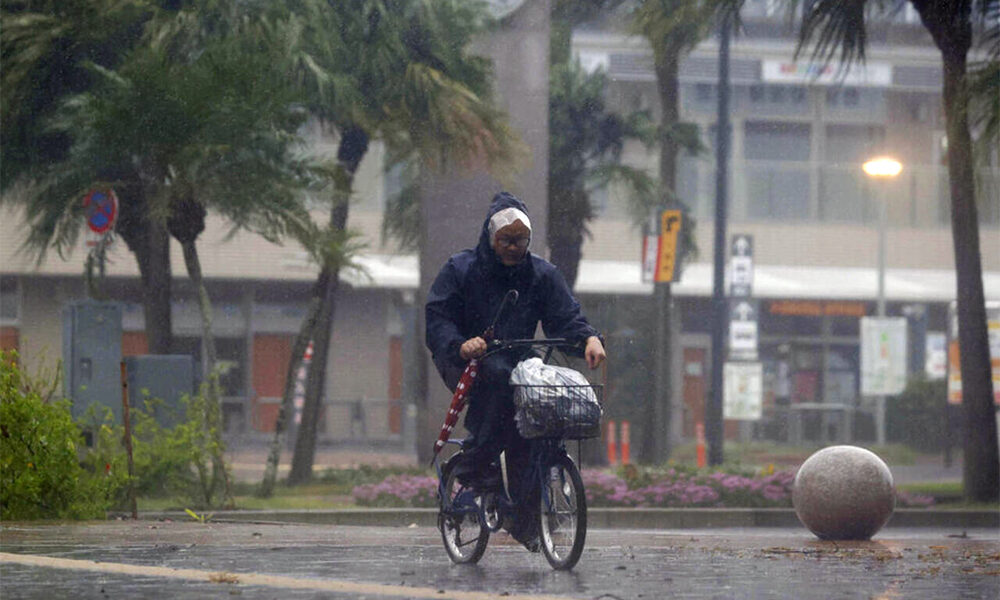Climate Change
Thousands in shelters as Japan braces for deadly typhoon

Thousands of people were in shelters in southwestern Japan on Sunday as powerful Typhoon Nanmadol churned towards the region, prompting authorities to urge nearly three million residents to evacuate.
The Japan Meteorological Agency (JMA) has issued a rare “special warning” for the Kagoshima region in southern Kyushu prefecture — an alert that is issued only when it forecasts conditions seen once in several decades.
By Sunday morning, 25,680 households in Kagoshima and neighboring Miyazaki were already without power, while regional train services, flights and ferry runs were canceled until the passage of the storm, local utilities and transport services said, AFP reported.
The JMA has warned the region could face “unprecedented” danger from high winds, storm surges and torrential rain.
“Maximum caution is required,” Ryuta Kurora, head of the JMA’s forecast unit said on Saturday.
“It’s a very dangerous typhoon.”
“The wind will be so fierce that some houses might collapse,” Kurora told reporters, also warning of flooding and landslides.
So far, 2.9 million residents in Kyushu have been issued with evacuation warnings, according to the government’s Fire and Disaster Management Agency, and Kagoshima officials said over 8,500 people were already in local shelters by Sunday morning.
The evacuation warnings call on people to move to shelter or alternative accommodation that can withstand extreme weather.
But they are not mandatory, and during past extreme weather events authorities have struggled to convince residents to take shelter quickly enough.
Kurora urged people to evacuate before the worst of the storm arrived and warned that even in sturdy buildings residents would need to take precautions.
The typhoon is expected to make landfall in Kyushu on Sunday evening, before turning northeast and sweeping up across Japan’s main island through early Wednesday.
Japan is currently in typhoon season and faces around 20 such storms a year, routinely seeing heavy rains that cause landslides or flash floods.
Scientists say climate change is increasing the severity of storms and causing extreme weather such as heat waves, droughts and flash floods to become more frequent and intense.
